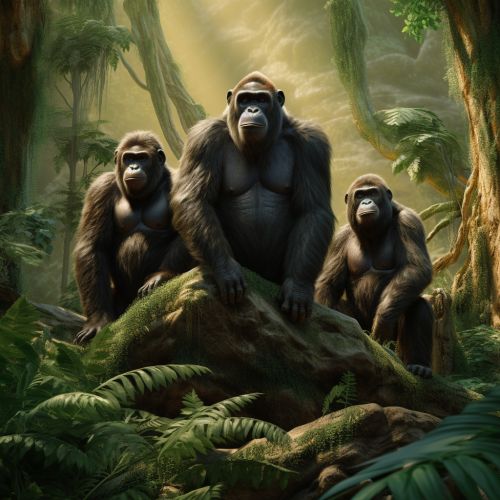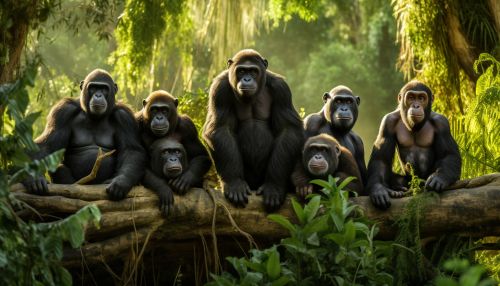Great Ape
Taxonomy and Evolution
The great apes, also known as hominids or Hominoidea, are a taxonomic family of primates that includes four extant genera: chimpanzees and bonobos (Pan), gorillas (Gorilla), orangutans (Pongo), and humans (Homo). The family diverged from the lesser apes around 14-16 million years ago during the Miocene epoch.


The great apes are distinguished from other primates by their larger size, absence of a tail, and highly developed brains. They are also characterized by their complex social structures, use of tools, and diverse communication methods including vocalization, facial expressions, and body language.
Anatomy and Physiology
Great apes have a robust build with long arms, a large torso, and short, thick legs. The skeletal structure is designed to support both bipedalism (walking on two legs) and brachiation (swinging from tree limb to tree limb). The dental formula of great apes is 2-1-2-3, meaning they have two incisors, one canine, two premolars, and three molars in each half of each jaw.
The brain of a great ape is highly complex and is capable of advanced problem solving, learning, and communication. The cerebral cortex, the part of the brain responsible for higher cognitive functions, is highly developed in great apes.
Behavior and Ecology
Great apes are highly social creatures, living in complex social structures. These can range from the small, flexible groups of bonobos and chimpanzees, to the more stable, cohesive groups of gorillas. Orangutans are more solitary than the other great apes, but still maintain strong mother-offspring bonds.
Great apes are also known for their use of tools. Chimpanzees, for instance, use sticks to extract termites from their mounds, while orangutans have been observed using tools to scratch themselves and extract seeds from fruit.
Conservation Status
With the exception of humans, all great apes are endangered or critically endangered, primarily due to habitat loss and hunting. Conservation efforts are underway to protect these species and their habitats, but their populations continue to decline.
